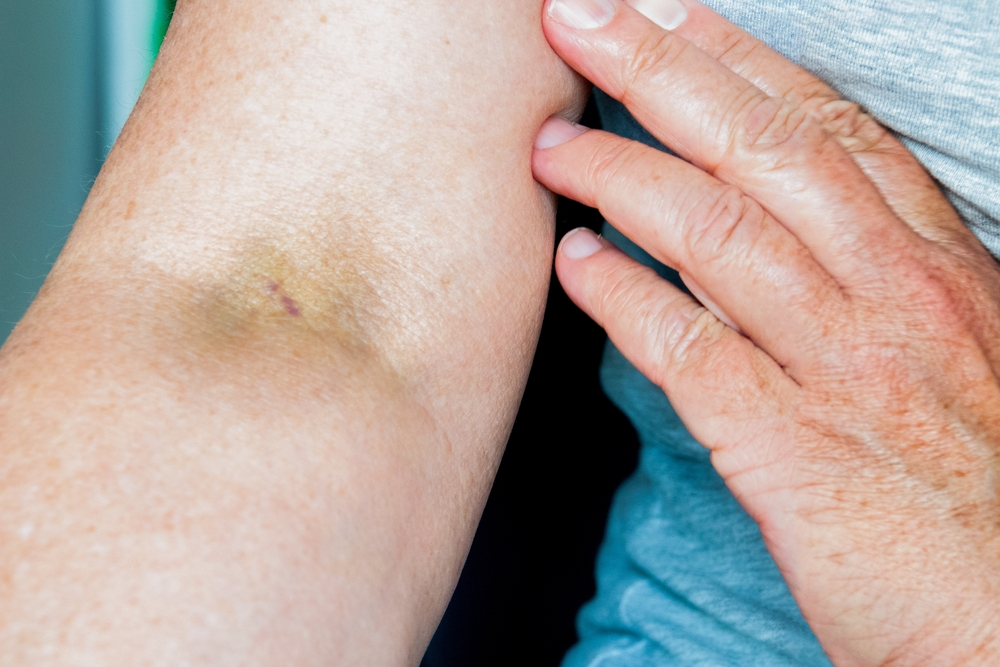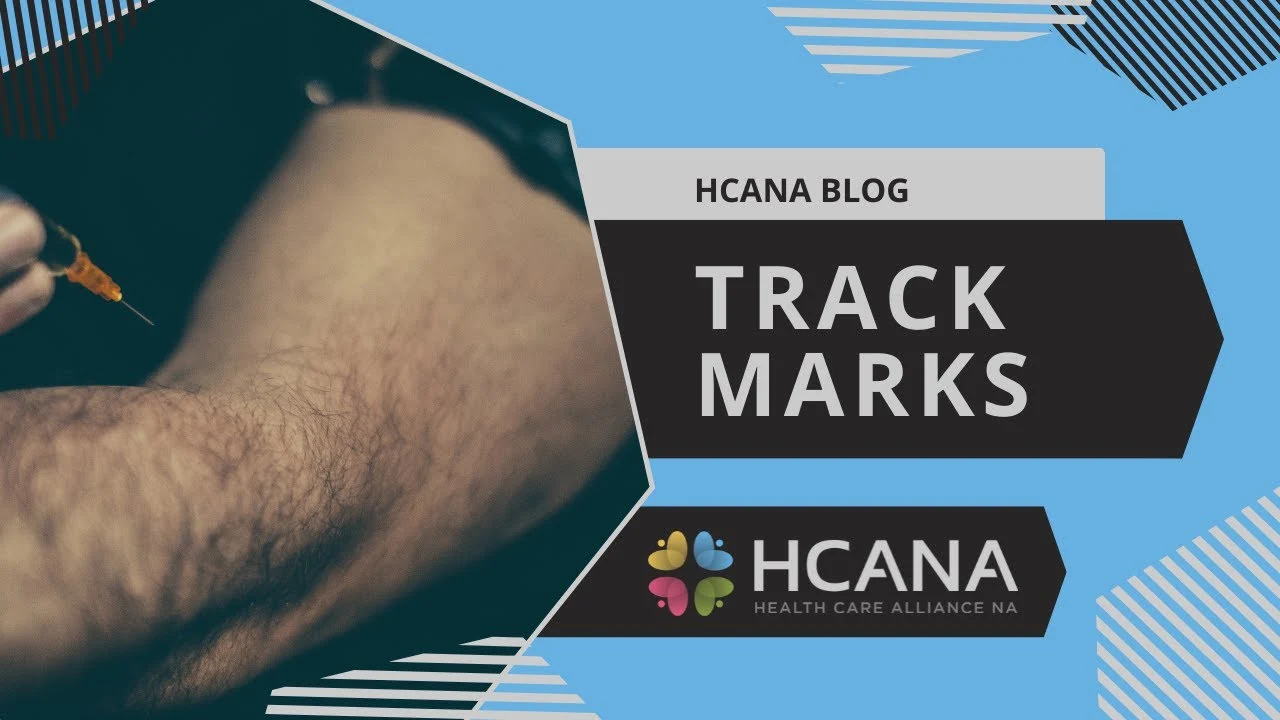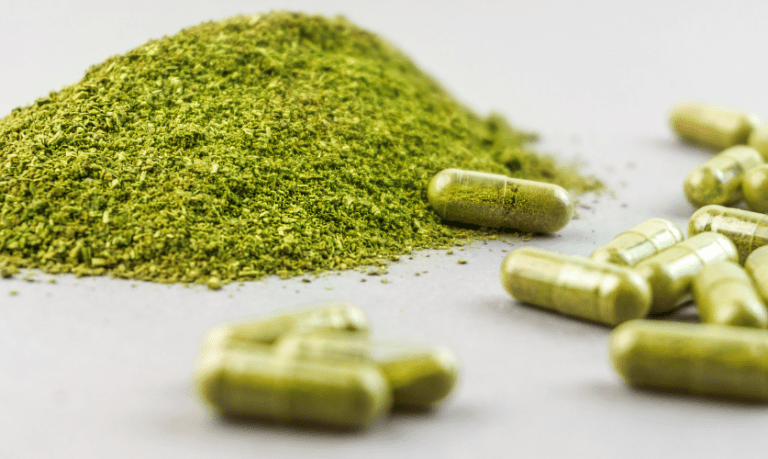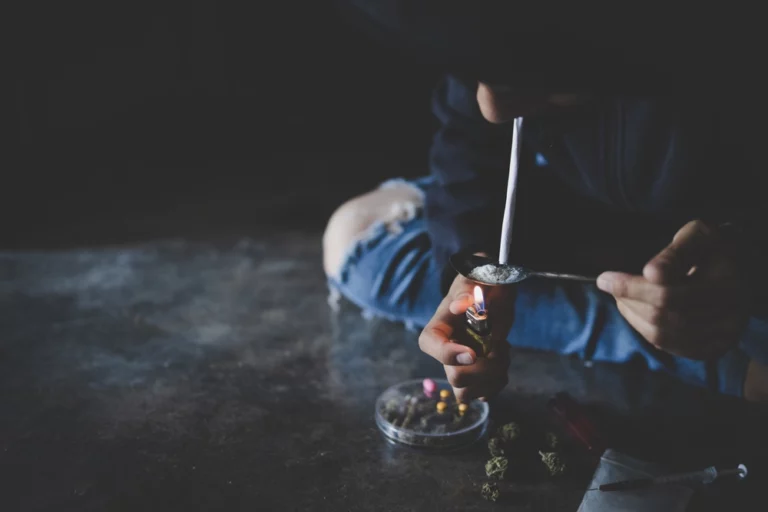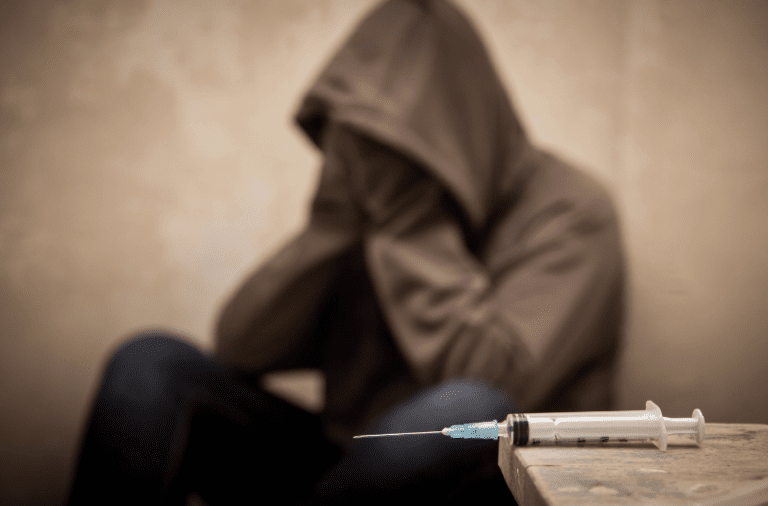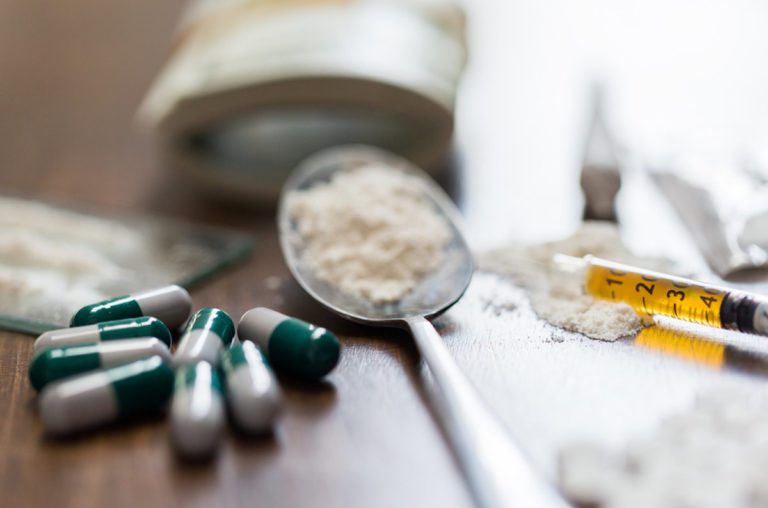What are Track Marks? An Informative Guide
Unlike other types of administration, injecting drugs leaves visible physical signs, or track marks, for anyone to see. Most drug users don’t start injecting drugs, but those seeking a quick high might eventually progress to intravenous drugs.
In this article, you will learn about track marks and what they tell you about someone’s addiction.
What are Track Marks?
Track marks are scar tissue caused by repeated drug injections into the veins, most commonly heroin or methamphetamine. They are generally visible signs of substance use disorders and appear mainly in the forearms. Still, they can appear anywhere on the body where repetitive injections occur, such as the legs, ankles, and feet.
Track marks can be caused by more than just repeated injections.
- Repeated use of blunt needles during intravenous injection may require extra pressure to pierce the skin and vein, causing additional damage and worse needle marks.
- Street drugs often contain impurities, bulking agents, and contaminants, which can accumulate at the injection site and create dark-colored track marks. Most street drugs are rarely pure and are cut with other substances.
What do Track Marks Look Like?
Track marks resulting from IV drug use initially appear as deep bruises, which become scabs at the injection site. Long-term users tend to have track marks on different parts of their bodies, including the arms, legs, and between fingers and toes. These scabs may also appear as dark circles caused by scar tissue resulting from ‘skin popping.’
As the frequency of IV drug use decreases, scabs or holes may appear on other parts of the body. Repeated use can result in skin infections and scar accumulation, making track marks more noticeable. Scarred, infected, bruised, or damaged sites become nearly impossible to access, leading individuals to move to other areas of the body.
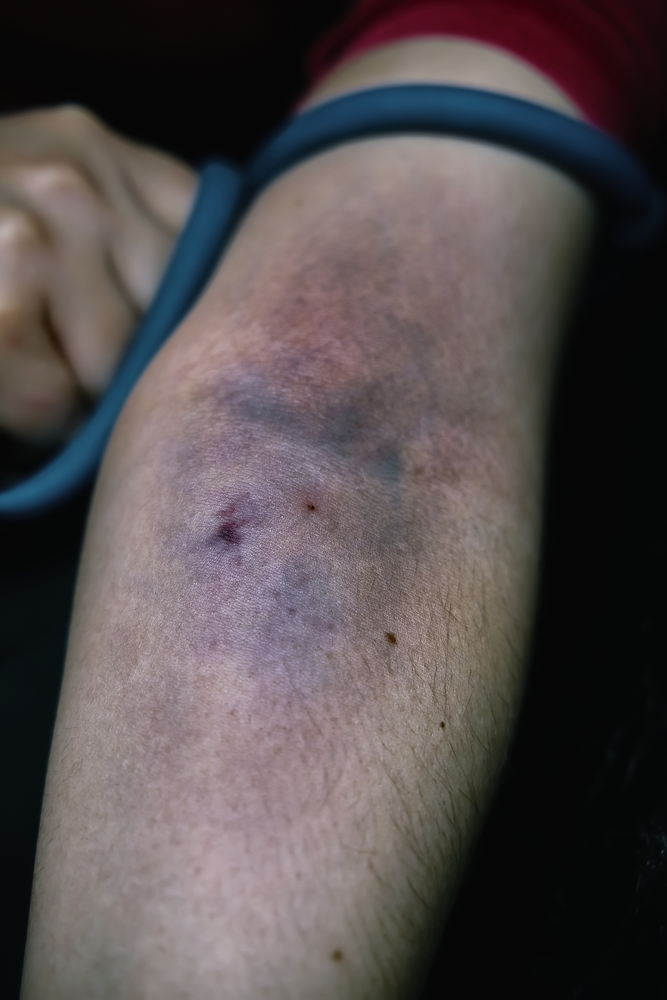
When a person is not shooting up IV drugs on a daily basis, the amount of time between doses will be longer, and scabs or holes may appear on other parts of the body. Because IV drug users use less frequently, their bodies have more time to heal after an injection. Because IV drug use progresses, users will develop cracked, dried skin that appears infected (e.g. irritated, inflammatory, or discharging).
Skin infections and scar accumulation are common indicators of repeatedly shooting up. When the same vein is shot, the injection site turns darker and larger, making the track marks more noticeable. It is nearly impossible to access a site that has become scarred, infected, bruised, or damaged with collapsed veins or wounds and the individual typically will move to other areas of the body.
What Types of Drugs Can Be Injected?
IV injection is one of the ways in which many drugs are administered. Following is a list of commonly injected drugs:
- Heroin
- Methamphetamine
- Cocaine
- Ketamine
- Morphine
- Opioid painkillers
- Prescription stimulants
- PCP
Speedballs, which are created by mixing cocaine and heroin, are becoming more common across the United States. Injecting any of these drugs, whether individually or in combination, is very dangerous and may result in death.
Physical Signs of IV Drug Use
The most obvious tell-tale signs that someone is shooting are physical ones. It is also important to note that the individual will attempt to conceal all physical evidence. In this case, those include:
- Track marks
- Skin infection
- Skin popping
- Vein damage
- Bruising
- Wearing long-sleeved shirts or pants
Other Signs of IV Drug Use
There are other ways to tell if someone is using intravenous drugs if you are unable to find the physical signs. These signs include but are not limited to:
Irritability
- Weight loss
- Poor hygiene
- Isolation
- Mood swings
- Legal trouble
- Neglecting responsibilities
- Constantly tired or drowsy
Where Can Track Marks be Found?
These marks are frequently found on the veins of the hands and arms of an individual. The veins in these regions are quite visible and simple to inject into. Long-sleeved clothing is frequently used to conceal track marks and scar marks on these areas. After the arms are full, the veins on the hands are also accessible and visible. Since the veins in the hands and arms frequently collapse or are too difficult to inject into, veins on the legs and feet are a good alternative. It is more difficult to access veins in the legs, but injecting into the feet is simple and covering them up afterward is simple as well.
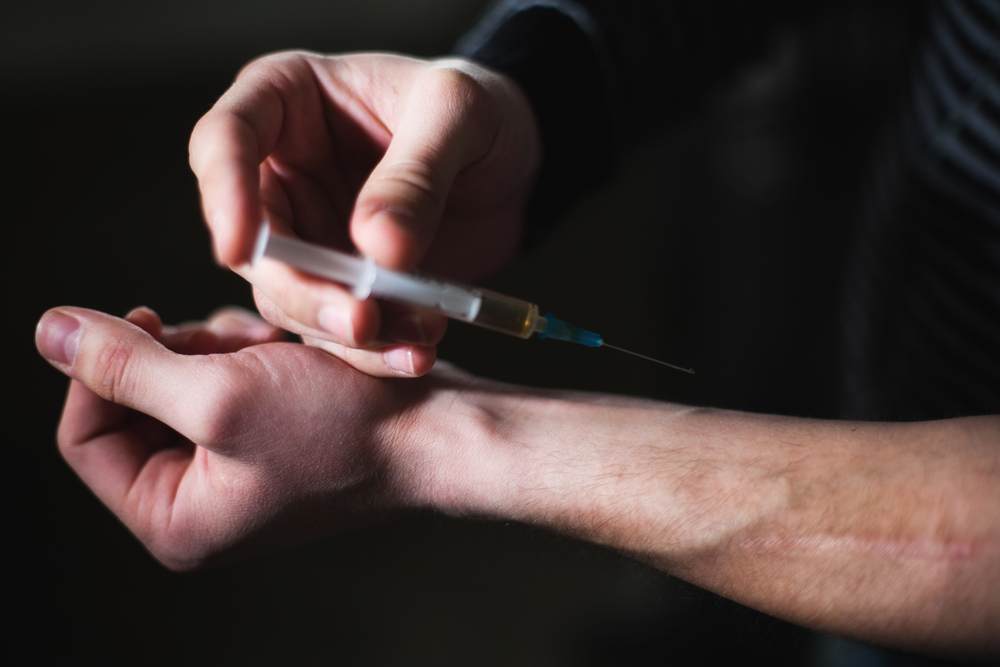
How are Track Marks Hidden?
The signs of intravenous drug use are very apparent, and heroin addicts go to great lengths to conceal them. Typically, heroin abusers try to distribute injection sites and hide the marks by shooting heroin in non-typical spots on the body. The neck, groin, hands, feet, and toes are among the alternative injection sites. Clothing, long sleeves, and make-up can conceal injection wounds and injections are usually performed where they are usually covered.
Risks of IV Drug Use
Injection marks can indicate severe drug addiction, but they can also result in other health problems. These include, but are not limited to:
Infection
People who use dirty or dull needles are at a higher risk of infection, which is commonly referred to as skin popping. Intravenous drug users usually come into contact with bacteria or fungi present in the drugs, which leads to infections. Blood infections can quickly become life-threatening if they reach the brain, heart, or other major organs. Furthermore, puncture wounds are vulnerable to infection.
Collapsed Veins
Repeated punctures cause the vein walls to collapse, restricting blood flow. This condition requires medical treatment. If left untreated, they may lead to circulatory issues that result in heart problems, strokes, kidney disease, and more. The blue skin of the limbs is an indication of a low oxygen supply.
Scarring
An injection into a scar may cause scarring, especially if the site of the injection has not healed. Scar tissue may become quite extensive, resulting in veins that cannot be accessed intravenously again.
Abscesses
Abscesses are painful swollen masses caused by an underlying infection. They are usually the result of bacterial infections and are typically painful. To remove the pus and release the mass, surgical procedures are required. Antibiotics are also required to help the body eliminate the infection.
Blood Clots
An accumulation of blood clots in a vein after repeated injections can lead to deep vein thrombosis, a condition that is fatal if not treated promptly. An embolism can be created when the blood clot travels from the vein to the lungs, resulting in an embolism that blocks the flow of blood through the lung. An embolism in the lungs can cause breathing difficulties or even death.
Disease
Sharing needles or syringes that have been exposed to HIV can transfer the disease to you. Drug injection also increases your risk for getting hepatitis B and hepatitis C, among other diseases.

Can Track Marks Heal?
People who inject drugs into their veins habitually and compulsively will always have scars. Ointments, creams, and wound treatment therapies can be used with limited success, but the only way to get rid of these scars is to seek addiction treatment. These unsightly blemishes will fade over time, but they will reappear unless the habit is terminated once and for all. It may take some time to heal, depending on the severity of the damage. Individuals with damaged veins should seek medical care to prevent an infection. Serious bloodstream infections can lead to serious health problems. If the veins are sufficiently damaged, some plastic surgeons might be able to reduce their visibility in the long term.
Can Veins Heal Themselves?
The human body possesses an exceptional self-healing capability, which also extends to the veins. This is evident from the speedy recovery of bruised veins caused by IV injections. Nonetheless, frequent damage can impede or hinder the body’s ability to heal, resulting in a more challenging and less effective healing process.
Tips For Healing Track Marks
When a single vein experiences prolonged damage, the body may halt the healing of the existing vein and stimulate the growth of new veins through angiogenesis. Although this process occurs naturally, there are ways to assist the body’s immune response and accelerate the healing of damaged veins that are not beyond repair. These include:
- Keeping warm by wearing shoes, socks, blankets, etc.,
- Wearing compression clothing like socks, sleeves, or stockings,
- Engaging in regular physical activity to enhance circulation,
- Incorporating supplements such as folic acid that aid in cardiovascular health,
- Using a stress ball to exercise veins and develop the surrounding muscles, and
- Practicing vein rotation by alternating the injection site to prevent further damage during intravenous injections.
What are Needle Exchange Programs?
A Needle Exchange Program, also known as a syringe services program (SSP) or syringe exchange program (SEP), is a community-based program that provides sterile needles and syringes, facilitates safe disposal of used syringes, and helps connect people with additional services and programs. Despite the controversy, these harm reduction programs have both advantages and disadvantages. Despite nearly a decade since needle exchange programs first started, the CDC appears confident in their performance. According to the CDC, these programs have reduced dangerous behavior by 80 percent and new cases of HIV/AIDS have decreased by 30 percent.
What to Do if You Suspect Someone is Injecting
An IV drug abuse intervention should be created before confronting your loved one if you think they have track marks. In order to anticipate the amount of care your loved one will need, locate an appropriate treatment facility. They will undoubtedly need to undergo a heroin detox procedure to remove the drugs from their system safely without risking potentially fatal withdrawal symptoms. Following detox, inpatient treatment, and subsequent outpatient treatment for any underlying mental health issues and replacing drugs with healthy coping mechanisms are critical. Drug abuse problems are often a response to anxiety, depression, or overwhelming adversity. By treating your loved one with therapy and group support, you can effectively treat their addiction.
You Can Trust Oasis Recovery Center
Track marks are a sign of extremely advanced addiction, and seeking assistance is critical if you want help. If you or a loved one needs addiction treatment, we can help you overcome IV drug addiction at Oasis Recovery Center. We can work together to fight this addiction and assist you or your loved one in recovering.
We offer evidence-based rehab programs at Oasis Recovery Center to help people with addiction find the right path to recovery. If you or a loved one are struggling with drug addiction, we can help you with substance abuse treatment and assist you in your journey to sobriety. Contact us today to learn more.



